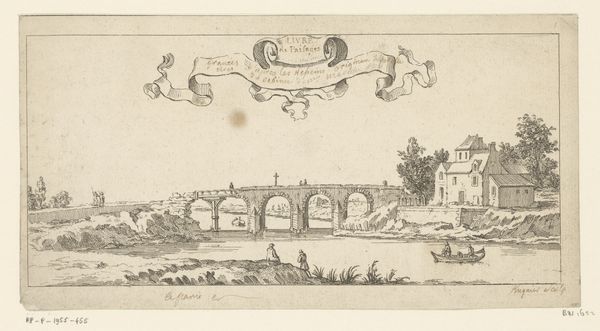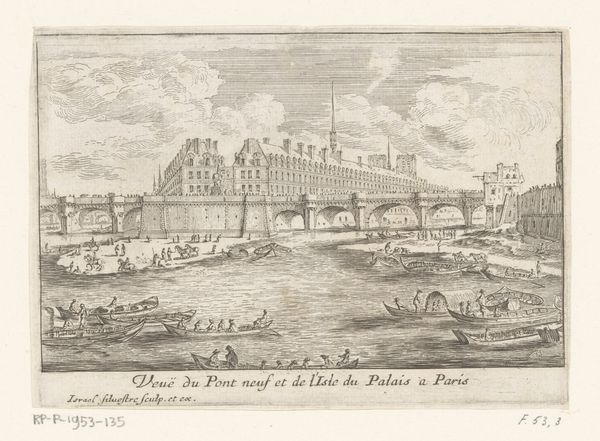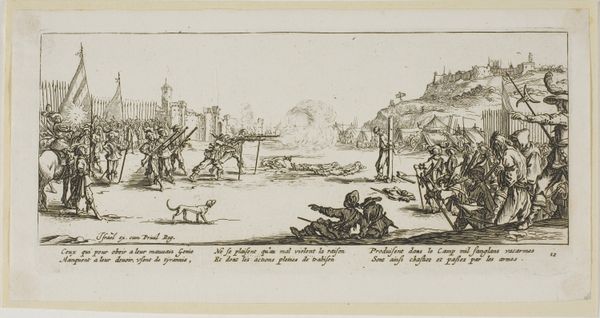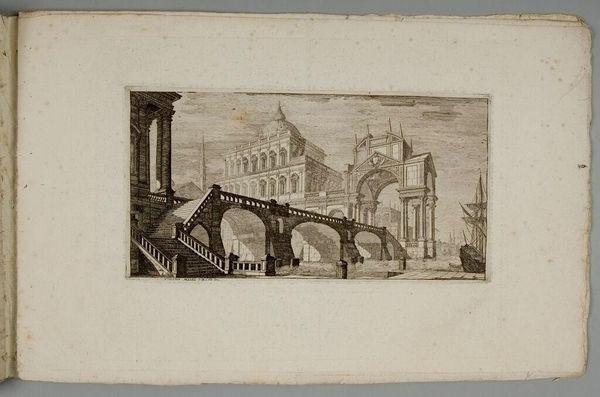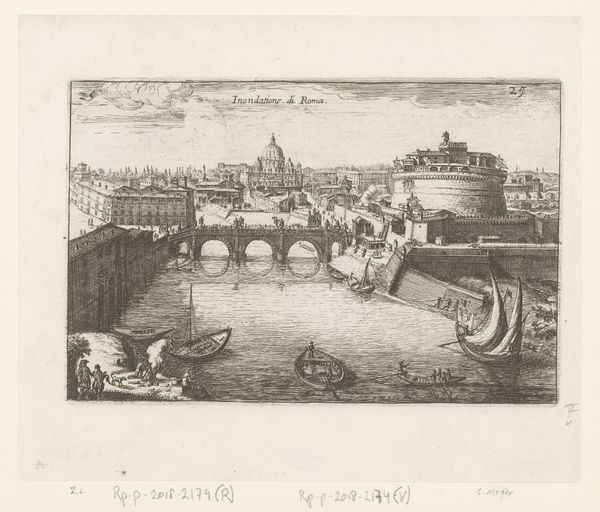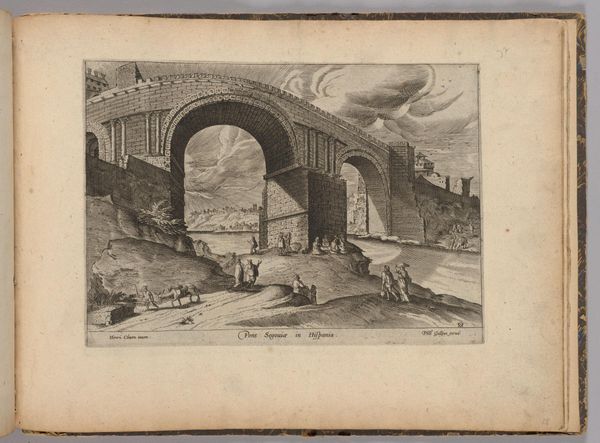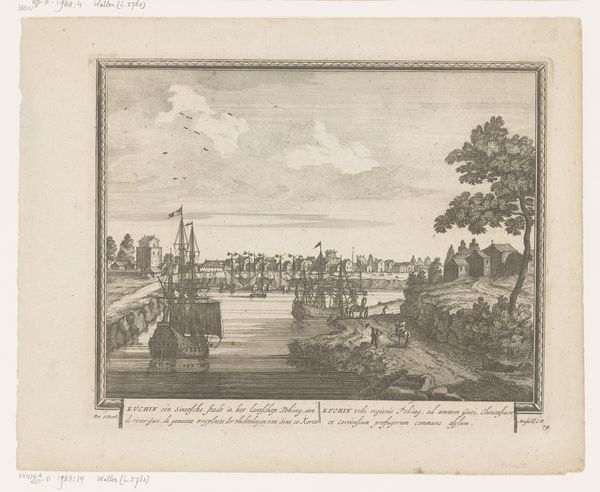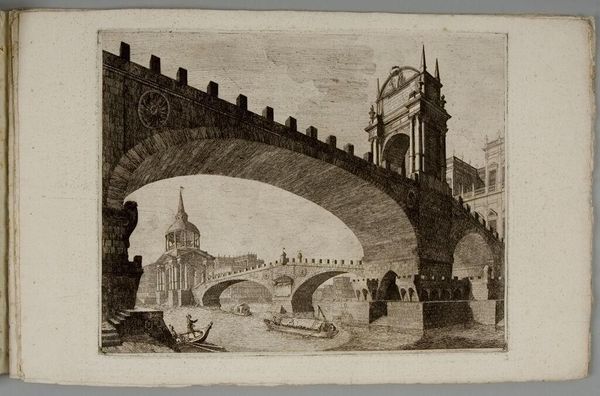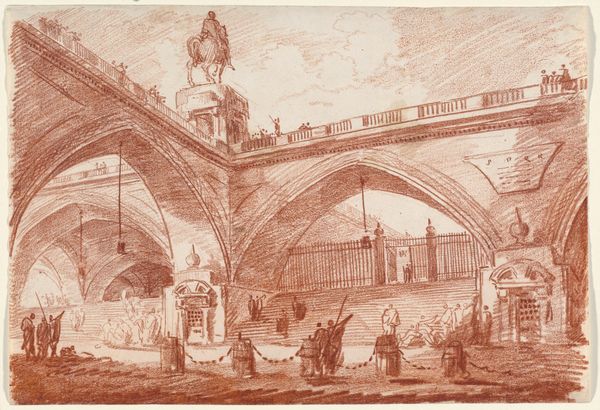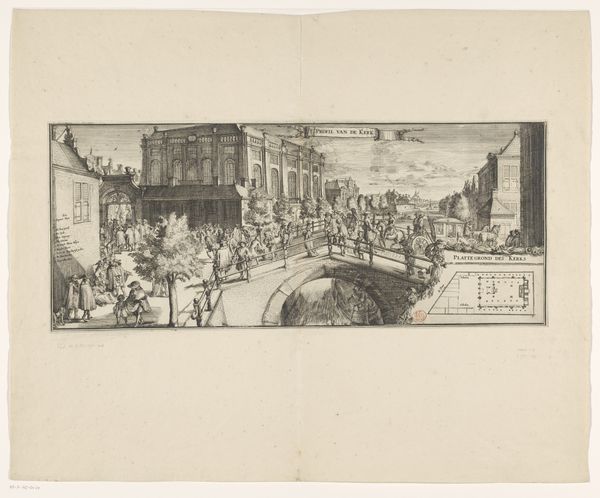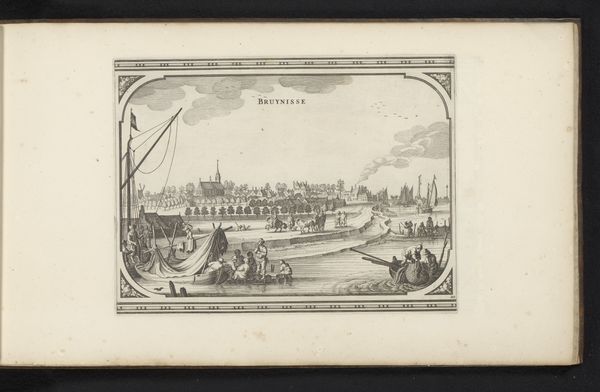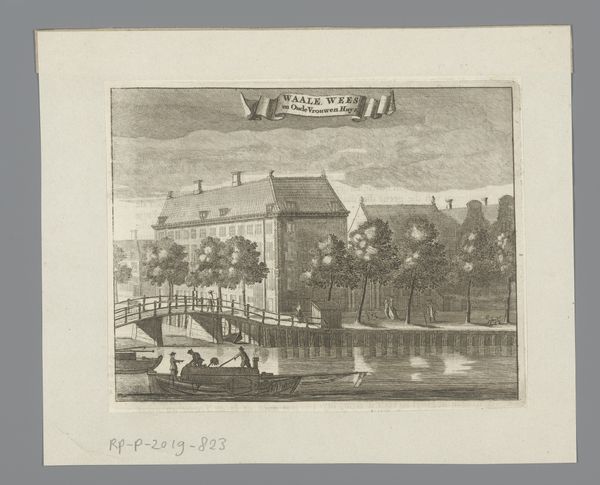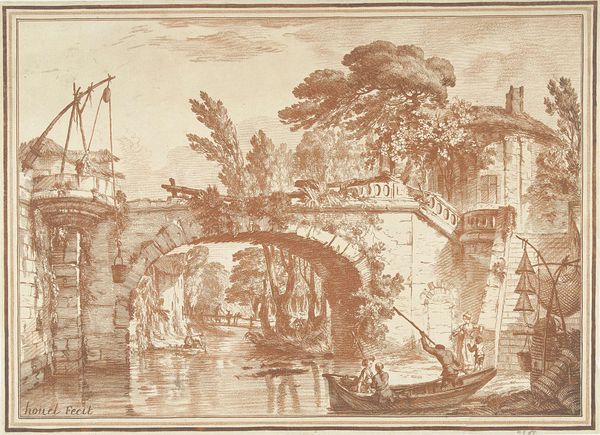
A View of the New London Bridge as It Appeared on the 1st August 1831, When Opened by His Majesty, King William the 4th
0:00
0:00
Dimensions: image: 171 x 464 mm
Copyright: CC-BY-NC-ND 4.0 DEED, Photo: Tate
Curator: A View of the New London Bridge as It Appeared on the 1st August 1831, When Opened by His Majesty, King William the 4th. The artwork, attributed to the British School, presents the grand opening of the bridge. Editor: It's incredibly detailed, almost obsessively so. The monochrome palette gives it a certain gravitas, a documentary feel, but also a kind of restrained energy with all those people. Curator: Indeed, the linear precision and the density of the image create a powerful sense of spatial organization. The bridge itself serves as the dominant horizontal, anchoring the bustling activity below. Semiotically, the bridge signifies progress. Editor: But what kind of progress? The image is thick with bodies, all seemingly celebrating royal patronage. The event, the new bridge, are all presented as part of a top-down, monarchical project. Curator: The artist has captured a moment of perceived unity under the umbrella of royal authority, yet the very act of depicting such a scene reinforces that power dynamic. The bridge becomes not just a physical structure but a symbol of social order. Editor: Seeing it now, I'm more struck by what it reveals about the era's obsession with spectacle, and how that spectacle was consciously deployed to legitimize power. Curator: Precisely. It's a fascinating intersection of aesthetics and socio-political strategy.
